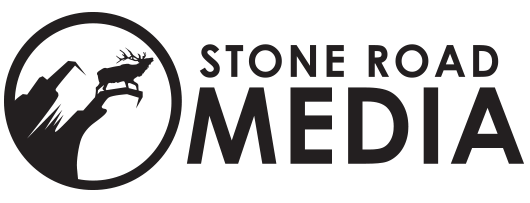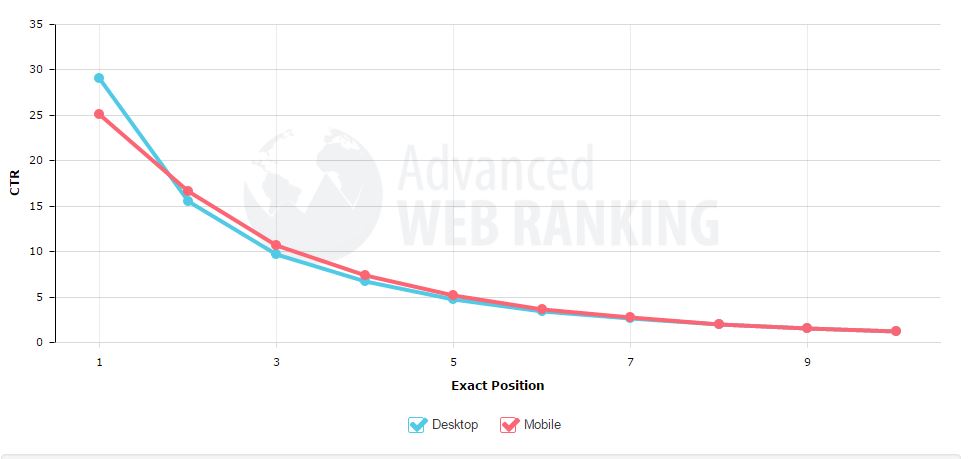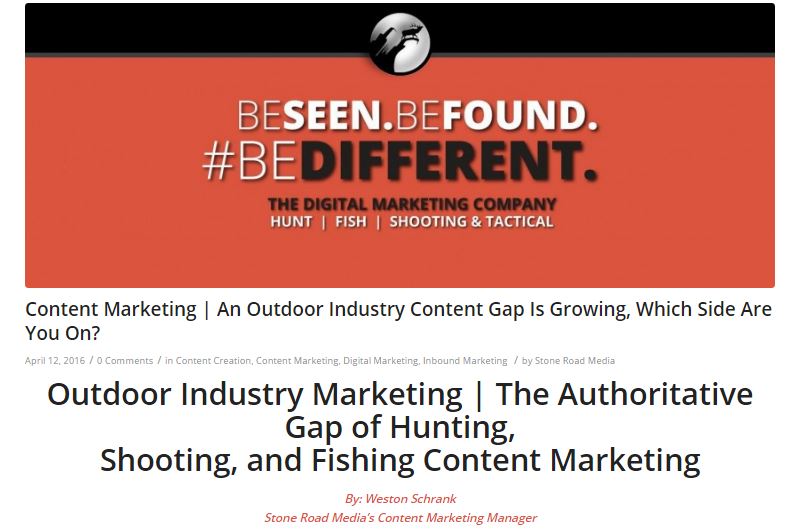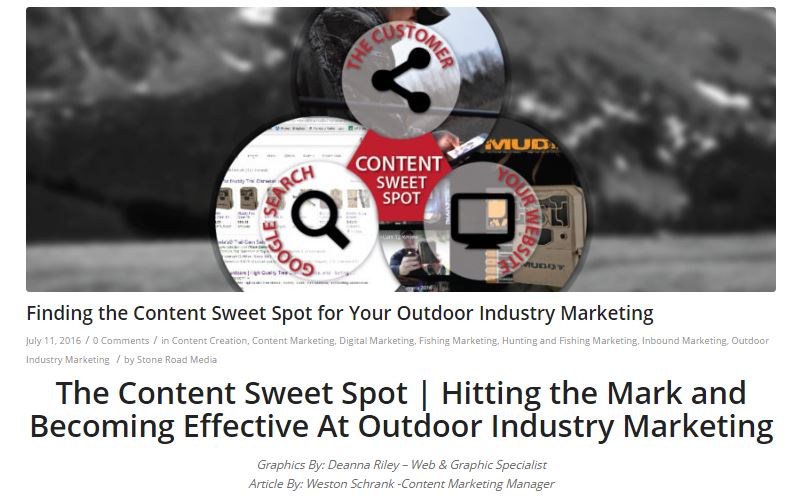Shooting and Tactical Marketing | Sniping Valuable SERP Real Estate
Sniping SERP Real Estate | Shooting and Tactical Marketing Plans
Photo By: Steve Smolenski – CEO/CTO
Graphics By: Deanna Riley – Web & Graphic Specialist
Article By: Weston Schrank -Content Marketing Manager
While it might be hard, I am going to try and refrain myself from going into the now scripted writing of talking about why content creation and content marketing is important. It in all honesty does feel scripted, like I am supposed to type those keys, those words, and those sentences in order on my keyboard to tell you the reader why content is important. Not today, I will not do it this time…By now, whether you are arriving at this blog from our own site or another blog, or if you have arrived from an organic search result, chances are you very well know how important content is. So saving time and space, I will move on to perfecting content marketing and moving on to the advanced stages by becoming deadly accurate with that content. This idea is how we have, and you can/should move on from basic digital marketing to full out sniping valuable SERP real estate. This is taking outdoor industry marketing, and more specifically shooting and tactical marketing to the next level, becoming a hardened content marketer, manager, or creator by creating top SERP ranking posts for anything you want…
“Each piece of content that is chambered into your content marketing machine should be primed with the proper optimization and value, dialed in with the correct keywords, and fired into the most effective location and position for your brand and product…resulting in leads and a lethal hit to your competition” – that is sniping valuable SERP real estate, that is effective shooting and tactical marketing…
SERP Real Estate?
Now when you’re going out to the field with a rifle, scope, and ammunition in hand, you have to know the lay of land and the terrain to determine what you are shooting at. You figure distance, wind, and factors that affect the flight to that target. In the case of your brand, product, or company this is learning what the real estate space is like on the Search Engine Results Page (SERP). But it goes beyond that, you have to look into what you can expect, what keywords, and long tails you should rank for, their average search volumes, what traffic you will own with a 1-5 or a first page position on that SERP. This is going into an intense content strategy for some, but for others it’s simply learning how to dial yourself and the content in. The fact is now is the time to do it! Dialing yourself, your brand, and your company in now will seize that real estate up before the industry and your competition does or plans to do so.
If you have a sense of marketing you know about content, its importance, and why you should create and optimize it. But really how valuable is this SERP real estate and how much work is involved to get the content there? What kind of traffic are you looking at…why does it matter that you have a presence on the first page of a search related to you? These question being contemplated in your mind might help move things along.
This graph derived from Advanced Web Ranking shows you a general idea of what kind of traffic the first page rankings will give you. Generally the numbers come to around 30-35% for #1, around 15-17% for #2, around 10% for #3, and around 3-8% for 4-10, and lower off of the first page. Now these numbers are extremely variable taking into consideration what type of keyword it is (unbranded vs. branded), long tail keywords, whether or not the SERP contain ads, and where they are located (top, bottom, or right side), and the search intent. In general the percentages and the graph will look the same. The real number we see off of this is that on average 70-75% of the clicks are on the first page…around 65-70% of those being #1-#5! This is no big trade secret, but knowing what to do with this information plus a few more tools is a skill and trade acquired with experience.
Is Ranking for Shooting and Tactical Marketing SERP’s Possible?
No, at least not without the knowledge, optimization, and power of literally perfect SEO tactics. So the real answer is most definitely YES, but only if you’re willing to put in the work. When it comes to firearms marketing, tactical marketing, gun marketing, and content marketing related to shooting and tactical companies, it is a tough and highly competitive field. You know this, and that is most likely why you are here in the first place.
Knowing this can almost seem entirely too daunting of a task to tackle. In this regard outdoor industry marketing, including shooting and tactical marketing officers and their campaigns just revert back to google ads. That is the easiest way to derive traffic from SERPs right? Yes and no, google ads have their place. In fact sponsored results account for 64.6% of clicks for high commercial intent keyword searches, while 35.4% of click are from organic unpaid search results (WordStream, 2012). But again, that is looking and considering search intent, product specific searches to be exact. When a user is searching product specific, a good strategy is being there with google ads, but SEO and organic search still does own informational searches, the information that consumers look for when educating themselves before they buy. In addition, your organic searches can own real estate right under ads, keep in mind much cheaper and more long term than those ads at that…For firearms marketing, tactical marketing, and gun marketing, and all forms related to the shooting and tactical marketing industry, this is an important concept to understand.
Let’s say we look up “holsters”. If someone is looking for this, they are undoubtedly looking to buy in most cases. More often than not the consumer will get much more specific than this, such as a search for “IWB holsters”. But the general search for holsters reveals top ads, right side ads, and bottom ads. In a SERP like this, organic is receiving a beat-down from sponsored results. But before the search for “holsters” might take place a majority of consumers will search with informational queries. Informational queries? In this case it might be a search such as “top concealed carry holsters” where a consumer might be looking for reviews, opinions, and a detailed article ranking concealed carry holsters. In this case, when looking for information, the consumer often skips right over the top sponsored results, and goes directly to the organic results. They are skipping the ads and going to your content.
So again going back to the real question, is trying to rank for shooting and tactical marketing SERP’s possible? Absolutely, the unquestionably great thing for content managers, strategists, and creators like me, (with any size company, budget, and resources) we can rank and compete with even the largest players in the shooting and tactical marketing industry. Know how, quality of content, consistency, and relentless creation of content can become a form of domination over competition. Content marketing and organic search results are an even playing field.
Shooting and Tactical Marketing Plans and Sniping SERP Real Estate
When and if you have a thoroughly trained asset behind a well-made and optimized machine, they can and will make devastating blows. These assets will begin knocking down rankings, any and all, whatever they choose, and the “hunting ground” is google…it is open season! We see these results everyday with our own content. We decide what keywords are most advantageous to own real estate and knock down the low hanging but valuable fruit down first. This highly specific sniping of real estate gets the ball rolling so to speak, establishing constant traffic across the content, landing pages, and shop from queries made monthly, weekly, and daily! Actually getting there with this content is an entire other discussion, again I am really trying to refrain from talking about the actual content itself, and trying to be more specific to this more advanced stage of content marketing. Sniping real estate is dialing in your content strategy, keyword and long tail keyword focuses. When this processed is refined into a well-oiled content machine, you will gain steady, reliable, and dominating flow of consumers across your website and pages, creating very valuable leads.
As you dive further into looking at inbound marketing, and trying to perfect your shooting and tactical marketing plans, it may be fitting for you to look into the assistance of an outdoor industry digital marketing firm like Stone Road Media. The least you can do is dive further into the topic of trying to develop you own content. Finding your content sweet spot, and sniping valuable SERP real estate will have great returns in the long run!
About:
Photo: Steve Smolenski has worked in the graphics and web design field for over 19 years. His expertise is in the areas of product development, R&D, graphic design, web development, SEO, and Social Media. He thrives integrating his technology background with 27 years of hunting and wildlife management.
Graphic: Deanna Riley grew up in western PA with a love for the outdoors, which lead to her drive to capture the essence of what’s around us in her nature photography and design work. She holds a BFA in Graphic Design, and is excellent at web, logo, and print design as well as social media.
Article: Weston Schrank is Stone Road Media’s Digital Content Manager. He has turned the obsession of outdoors and hunting, expertise in wildlife and land management, and understanding of specialized content creation and SEO into an excelling and devoted career as a content manager and strategist, benefitting the company’s many outdoor industry partners, and outdoor freelance writers.



